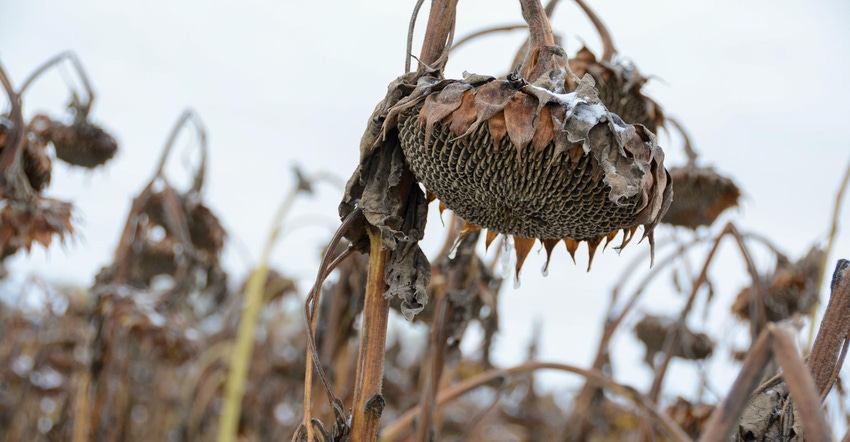
The freeze that occurred in September could affect sunflower yields in the key production areas of the Dakotas and Minnesota. The extent of the damage will not be fully known until farmers harvest their crop.
Initial estimates of total U.S. oil and non-oil sunflower production before the freeze occurred was in a range of 2.2-2.4 billion pounds, about 25% higher than last year’s crop. USDA will release its final acreage and production estimates in January.
Harvest of the U.S. sunflower crop got started in late September. Initial yield reports were positive, and quality was generally very good.
Depending on the size of 2020 crop, seed prices could drift lower as harvest deliveries arrive at plants and farmers pick up the selling pace in the next couple of months. After the initial harvest delivery period prices will follow demand news.
Global production
Global sunflower production in 2020-21 is projected at 54 million metric tons (MMT), which is down about 1.7 MMT from last year. The decrease is mainly due to smaller crops in Bulgaria, Romania, Russia and Argentina. EU and Ukraine production is expected to be equal to last year.
Global crush is projected to decrease based on the lower production figure. Sunflower oil trade is forecast to remain steady at last year’s level with ending oil stocks decreasing 8% from 2019-20 levels. Ending seed stocks are expected to stay relatively low, representing only 4.3% of annual usage.
2021 acres
With harvest in progress in northern hemisphere countries, the market is beginning to look at 2021 production prospects in the southern hemisphere. Farmers in both Brazil and Argentina are talking about a significant increase in 2021 soybean acres. If realized, this could put pressure on U.S. new crop oilseed prices this fall into winter.
U.S. producers are also looking at crop options for 2021. Sunflower crush plants are expected to be out early offering new crop NuSun and high oleic contracts that have cash or Act of God production clauses. Crushers will want to maintain the momentum of this year’s acreage gain.
New crop sunflower prices are expected to be very competitive in relation to other crops. Something else to keep in mind when selecting which crops to grow next year is oil premiums that are paid on sunflower.
Oil premiums are offered at the crush plants on oil content above 40% at a rate of 2% for each 1% of oil above 40%. For example, 45% oil content results in a 10% price premium that pushes gross returns from oil sunflower even higher.
Sandbakken is the executive director of the National Sunflower Association.
Read more about:
SunflowersAbout the Author(s)
You May Also Like






